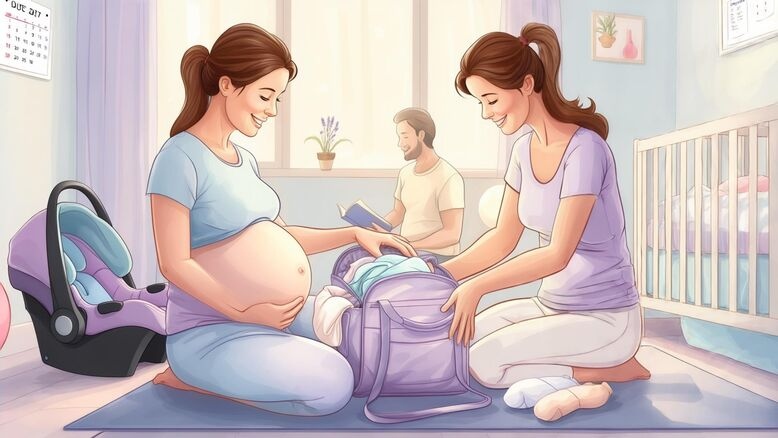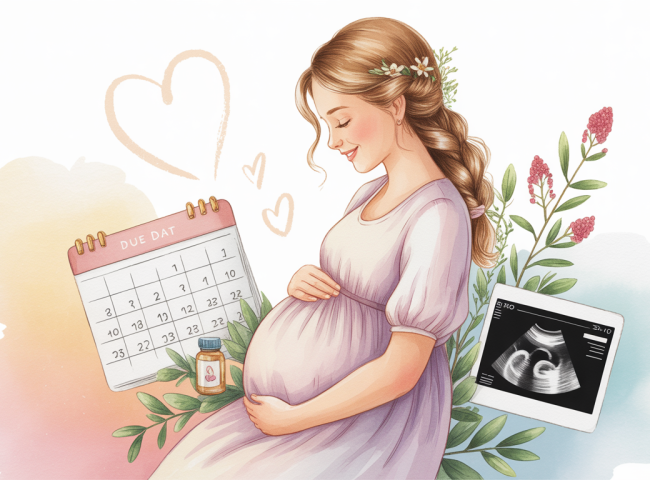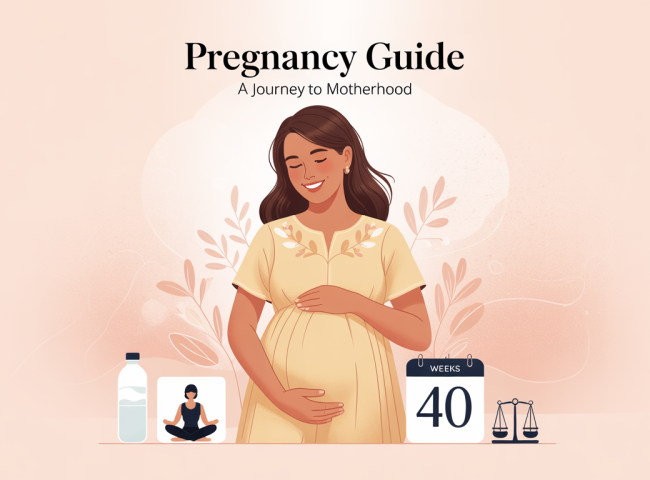📆 Snapshot: As you near the end of pregnancy (typically weeks 37–42), labor preparation becomes a top priority. This phase is about recognizing the signs of labor, finalizing plans, and getting mentally and physically ready for birth and postpartum recovery.
🩺 What Happens During Labor?
| Stage | What Happens |
|---|---|
| Early & Active Labor | Cervix dilates from 0 to 10 cm; contractions become stronger and closer together |
| Birth of Baby | Baby is delivered through the birth canal |
| Delivery of Placenta | Placenta is expelled after the baby is born |
🧠 Signs You’re in Labor
| Sign | Description |
|---|---|
| Regular contractions | Get stronger, longer, and closer together over time |
| Water breaking | Sudden gush or slow leak of fluid from the vagina |
| Pelvic pressure | Feeling baby “drop” into your pelvis |
| Back pain | Especially if persistent or rhythmic |
| Mucus plug loss | Thick discharge, sometimes tinged with blood |
💡 Tip: If you’re unsure whether you’re in true labor, call your provider or go to your birth location for evaluation.
📋 Finalizing Your Birth Plan
- Pain relief options: Epidural, IV meds, natural coping strategies
- Support team: Partner, doula, friend, family member
- Delivery preferences: Vaginal birth, cesarean, delayed cord clamping
- Post-birth choices: Skin-to-skin contact, newborn procedures, feeding plans
🗒️ Bring a copy to the hospital or discuss it with your OB or midwife beforehand.
🧳 Hospital Bag Checklist
| For You | For Baby | For Support Partner |
|---|---|---|
| Comfy clothes, robe, socks | First outfit, swaddle | Snacks, change of clothes |
| Toiletries, lip balm | Blanket, newborn diapers | Phone charger, pillow |
| ID, insurance, birth plan | Hat, mittens (if cold) | Camera (if desired) |
| Maternity pads, nursing bras | Car seat (installed!) | Reusable water bottle |
🧼 Pack by week 36 and keep your bag in an easy-to-grab spot.
🤸♀️ Comfort & Coping Techniques
| Technique | How It Helps |
|---|---|
| Breathing exercises | Promotes calm and oxygen flow |
| Warm showers/baths | Soothes pain and tension |
| Movement (walking, bouncing) | Encourages labor progression |
| Massage or counter-pressure | Eases contractions and back pain |
| Visualization/meditation | Boosts focus and reduces anxiety |
💬 Many childbirth classes teach these tools — practice in advance!
🚗 Labor Logistics
- Know when to call your provider (e.g. 5-1-1 rule)
- Confirm your birth location and route
- Arrange child or pet care if needed
- Keep fuel in your car and your phone charged
🛏️ What Happens After Birth
| Within First Hours | Why It Matters |
|---|---|
| Skin-to-skin contact | Regulates baby’s temperature, bonding |
| Breastfeeding initiation | Helps milk production and bonding |
| Uterine massage | Prevents postpartum bleeding |
| Placenta delivery | Final stage of labor |
| Baby screenings | Ensures newborn health and safety |
✅ Labor & Delivery Checklist
- Take a childbirth or pain management class
- Tour your birth facility (virtual or in person)
- Pack your hospital bag
- Install and inspect the car seat
- Review your birth preferences with your provider
- Prep your home for baby’s arrival
🧐 Frequently Asked Questions
What if I’m past my due date?
Most providers wait until 41–42 weeks before inducing labor unless there’s a medical concern.
Can I eat during labor?
Light snacks and fluids may be allowed in early labor — check your hospital’s policy.
When should I go to the hospital?
Follow the 5-1-1 rule or go if your water breaks, bleeding starts, or baby’s movement slows.
Is labor always painful?
Labor is intense, but manageable with the right support and tools. Pain relief is available and encouraged if you want it.
Next Steps
- ➡️ Review Postpartum Recovery (guide coming soon)
- 🍼 Set up your nursing or bottle-feeding station
- 🧸 Get rest — you’re about to meet your baby!
📌 For educational use only. Always consult your OB or midwife for personalized medical advice.






Leave feedback about this